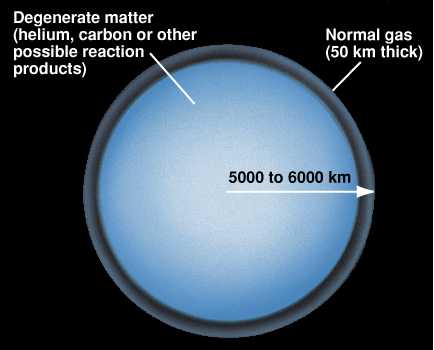What's going to happen to all the stars in the Universe as they get older? Well, just as nothing can live forever, stars can't live forever also. Why? Because they run on fuel: burning hydrogen into helium, for example. When they run out of fuel, something's gotta give. Barbara Ryden reminds us of an excellent and appropriate quote by Dylan Thomas:
Do not go gentle into that good night.
Rage, rage against the dying of the light.
But what exactly happens to the star depends very sensitively on what the mass of the star is.

If you've got a tiny little star, less than about 40% of the mass of our Sun, it burns hydrogen to helium, and doesn't have enough mass to burn helium any further. Our Sun will be able to burn helium into Carbon and Oxygen, and stars significantly more massive will be able to burn Carbon and Oxygen into Neon, Silicon, and even more massive stars will eventually burn those into Iron. Most stars that fall into this category, when they run out of fuel that they're able to burn, will expand into a giant star, and then contract into a white dwarf.

White dwarfs don't burn anything, and are only "white" because they emit light due to the energy released from contracting gravitationally. (For a size comparison, the radius of Earth is 6371 km.) When they're done shrinking after a few billion more years, they stop emitting light, and become known as black dwarfs. But the most massive stars with iron cores, about 8 times the mass of the Sun or more, go supernova. When they start to contract, the pressure on the iron core becomes so intense that it starts to fuse the protons and electrons found in the iron atoms into neutrons! This causes a tremendous release of energy, known as a supernova explosion:
But maybe not! Astronomers from Ireland have been tracking exploded stars with the Hubble Space Telescope. They've been trying to determine what the masses of stars were before they went supernova, by trying to identify which star it was that exploded. Based on their findings, they've found that some stars may be massive enough that they don't go supernova or hypernova, but instead, when they stop burning their fuel, collapse directly into a black hole! Now this is neat, because in theory it isn't the most massive stars that do this, since their radii will be large enough that they won't directly collapse into black holes, but some special mass range. Here's a diagram I've found to illustrate the different possible fates of stars, based on their starting mass:

Now, what I want to know is, will the most massive stars in our galaxy, Eta Carinae, the Pistol Star, and LBV 1806-20, go hypernova when they die, or collapse directly to black holes? It might depend on where they are relative to the Eddington Limit, but for all we're sure of at this point, it might as well depend on whether they've read their Dylan Thomas or not!

iam doing a speach in the class about stars.so i wount to know if star change coulers
Fake...
There's really no need to substitute the word fuse for 'BURN' it's off putting, not scientific and does not the reader, rather it confuses them more!
he did not say that iron is the last thing the star can bern becasue berning iron kills the star by not giving it any thing to bern off that why big star collapes on its self